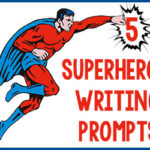Ever hear your child say that about a lesson in math, handwriting, or some other subject?
It would be nice if your child had a genuine interest in every single lesson that they study, but that only happens in a perfect world. There will undoubtedly be some lessons that are less appealing than others.
It would also be nice if we could just avoid those boring lessons (in that perfect world). However, the consequences of skipping instruction in important skills like reading or counting are, as you well know, very bad. It is our job as homeschoolers to prepare our children for the world with the skills they need.
Fortunately, there is something you can do to make learning fun for some of those “boring” lessons.
(Actually, there are lots of things that can be done, but we’re going to look at one in particular today.)
To make learning fun for your child, you can incorporate some of your child’s favorite things into the lesson. This makes the activity more appealing for your child. It also shows your child that you have a genuine interest in his passions. This can beneficial for strengthening the bond between you and your child.
Now putting your child’s likes and interests into lesson here and there isn’t as difficult as you might think. Let me give you some examples of how it can be done.
Reading
Allow your child to have some choice with regards to reading materials. If he likes bears, let him read some books about bears. Older children and teens should be able to select a novel of choice occasionally.
Spelling and Grammar
Your child’s favorite things can be inserted into spelling and grammar exercises. Simply substitute some of the words in your workbooks with others. For example, in a sentence diagramming activity that uses the following sentence…
The brown dogs ran into the house.
You could substitute velociraptors for dogs. Now the sentence would read…
The brown velociraptors ran into the house.
If your child is passionate about dinosaurs, do you think he’ll mind writing velociraptors over dogs?
Probably not.
Composition
You can let your child write about his favorite things sometimes for compositions. Some examples include a biography of his favorite athlete, a report about his favorite animal, or a poem about his pet.
Math
Not all word problems have to be about boring things like apples and oranges. What about one that involves you child’s favorite characters from a book or movie? Or what about addition problems with dinosaurs? You can cross out and rewrite words in a workbook or use sticky notes in a textbook to modify problems fairly easily.
Handwriting
Favorite quotes from songs, books, movies, or other media can be used to add an interesting flavor to your handwriting program.
Foreign Language
Favorite things can be incorporated into foreign language studies. They can become new vocabulary or they can simply be added to exercises. Let me show you how.
I am currently teaching my teenager Spanish. One of the things I do with her Spanish program is to give her translation exercises plus questions in Spanish to answer weekly. I’ve found that putting in some of her favorite characters, like Doctor Who, makes these a exercises more interesting for her. Here’s one example of how I have done that.
This is a question I gave her to answer:
¿Quién tiene el TARDIS?
It’s asking her, “Who has the TARDIS?”
She correctly answered:
El Doctor tiene el TARDIS.
So you see, adding items of interest into your child or teen’s curriculum doesn’t have to be complicated, and it can be done as frequently or infrequently as you like. It’s totally at your discretion.
If you’d like some ideas for favorite things that you can incorporate into your child’s curriculum, here’s a list of suggestions:
- Animals
- Quotes from books, movies, or other media
- Characters
- Hobbies
- Pets
- Sports
- Famous figures past and present, i.e. Davy Crockett
- Toys
- Colors
- Foods
- Music or art
Of course, there are many other possibilities, but this list should at least get you started.
Remember, this trick to make learning fun works for children of any age, teens and adults included.
If you know of any homeschoolers who struggle with motivating their children to study, you may want to share this post with them so that they can make learning fun for their kids too.








